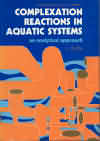This is a short list of books related to speciation analysis published before 1995. The list is neither complete nor can we tell anything about the availability of these books.
Metal Speciation and Contamination of Soil
by Herbert E. Allen, Chin P. Huang, George W. Bailey
CRC Press, 1994, 384 pages (ISBN 0873716973)
This book provides a thorough overview of the bio-geochemical processes governing the behavior, transport, and bioavailability of heavy metals in contaminated soils and suggests alternative approaches for effective remediation. It contains contributions from experts in various disciplines who explore the issues from theoretical, experimental, and pragmatic perspectives. Topics include redox chemistry, kinetics of metal reactions, spectroscopic characterization of metal ion reactions at surface, modeling hydrologic transport phenomena and colloid-associated transport of metals through the soil profile to ground water, and remediation alternatives.
Metal Speciation in the Environment (Nato Series G, Ecological Sciences)
edited by by
J.A.C. Broekaert, S. Gucer and
F. Adams
Springer, 1991, 660 pages (ISBN: 0387504230)
Metal Speciation in the Environment is a multidiscipliary treatment of the occurrence, mobility and detection of metal compounds within different environments as well as their interaction with life. Special emphasis is given to the complexation of metals, to the state of the art of trace analytical methodology available for metal speciation (including atomic absorption spectrometry, plasma emission and mass spectrometry, neutron activation analysis, electrochemical methods, chemical sen- soring, a.o.), and environmental chemistry of elements such as the actinides and heavy metals (e.g. chromium, arsenic, tin, and copper).
Trace Metal Analysis and Speciation
edited by I.S. Krull
Elsevier Publishing Company, 1991, 302 pages (ISBN: 044488209X )
This volume describes the most recent advances in areas of analytical chemistry that relate to the trace determination of metals and inorganics, as well as their distribution and forms (species) present, sample dependent. Analytical approaches are discussed that encompass a number of separation methods, such as gas and high performance liquid chromatography, interfaced with selective and sensitive detection methods that become unique for metal species/forms present in various samples. Hyphenated techniques are emphasized, such as interfacing HPLC with plasma emission spectroscopy, electrochemistry, post-column reaction chemistry, etc.
Metals Speciation Separation and Recovery, Volume II
by James W Patterson
Lewis Publishers Inc., 1990, 654 pages (ISBN: 0873712684)
This comprehensive book covers all aspects of metals chemistry, separation chemistry, and metals separation processes. State-of-the-art papers give news and recent developments and future research needs, of special value and interest to persons from industry, academia, government agencies, commercial and research institutes, information centers and libraries. This valuable work is the complete proceedings of the Metals Speciation, Separation and Recovery International Symposium sponsored by the Industrial Waste Elimination Research Center at the Illinois Institute of Technology, Chicago, Illinois, and the Water Research Institute of the Italian National Research Council, Rome, Italy, held in Rome, May 14-19, 1989.
Trace Element Speciation Analytical Methods and Problems
edited by Graeme E. Batley
CRC Press, 1989, 360 pages (ISBN: 0849347122)
This book discusses in detail the application of physical separation procedures together with modern instrumental analysis techniques such as HPLC, gas chromatography, and anodic stripping voltammetry. Particular emphasis is given to environmental samples where the greatest concern for the effects of speciation on trace element transport, toxicity, and bioavailability have been expressed. Special chapters are also devoted to methods of sampling and storage, and to the mathematical modeling of chemical speciation.
Environmental Analysis using Chromatography interfaced with Atomic Spectroscopy,
edited by Roy M. Harrison and Spyridon Rapsomanikis
Ellis Horwood Ltd., Chichester, 1989, 370 pages (ISBN 0-85312-979-7)
This book describes in detail the instrumentation required for chemical analysis by gas and liquid chromatography interfaced with atomic spectroscopic detection techniques and flame photometric detection. It covers commercially available detector and interface instrumentation, and where such instrumentation is not available, provides a detailed description to facilitate its construction.
The authors provide an element-by-element description of the application of each technique to environmental analysis, including sample collection and pretreatment as well as straight analytical detail, and covering hydride generation and derivatisation techniques. There is a review of published data to help establish typical environmental concentrations of these species amenable to analyses by these methods.
Analysis and Effects of Metal Speciation: Applications to Water Waste and Soil,
edited by James R. Kramer and Herbert E. Allen
John Wiley& Sons, 1988, 260 pages (ISBN: 0471612359)
Metal Speciation: Theory, Analysis and Application
edited by James R. Kramer and Herbert E. Allen
Lewis Pub., 1988, 357 pages (ISBN: 0873711408 )
This book discusses separation methods, extraction techniques; bioavailability as related to humans, plants, and aquatic organisms; applications showing importance of speciation in groundwater; industrial waste treatment systems, marines and lakes, solid-solution interface; fate of organic pollutants; nature of surfaces; binding of metals to oxides and sediments (dissolved and particulate matter); interpretations of reactions in multi-ligand systems.
 Complexation Reactions in Aquatic Systems - an analytical approach
Complexation Reactions in Aquatic Systems - an analytical approachby Jacques Buffle
Ellis Horwood, 1988, 692 pages (ISBN 0-13-156316-5)
This book gives a detailed, in-depth treatment of the different reactions of complexation of metal ions in aquatic systems, including both theoretical and analytical methodological approaches. Special emphasis is put on the physico-chemical properties of natural organic matter, on its interactions with metal ions and on the complexation reactions with polyfunctional complexants.
The book is out of print but a PDF version can be freely downloaded from the CABE website at:
http://www.unige.ch/cabe/complexation-reactions-in-aquatic-systems-J-Buffle.zip
Metals Speciation Separation and Recovery, Volume I
by James W Patterson
Lewis Publishers Inc., 1987, 800 pages (ISBN: 0873710347)
This comprehensive book covers metals chemistry, separation chemistry, and metals separation processes. State-of-the-art papers give new and recent developments and future research needs.
last time modified: March 5, 2024